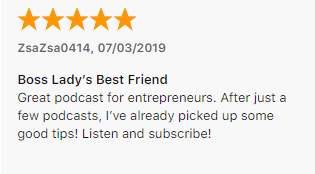The Fast-Track Woman Podcast: Episode #29
3 Copywriter Tricks That Make Your Emails Convert with Megan Haney
Click the Play Button + Listen Below.
Meet Podcast Guest, Megan Haney.
Megan Haney is a professional conversion copywriter and the founder of Megan Words, a purpose-driven business created to help women entrepreneurs with worthy causes communicate their value with the world. She has a B.A. in Communications, and worked for 12 years in diverse corporate communications roles at a multi-billion-dollar Fortune Top 5 Company, and as the Senior Writer for the CEO of a Forbes-ranked top 10 best employer in Canada.
But where Megan really finds her meaning is in helping women entrepreneurs write words—websites and email sequences, specifically—that they’re proud of and excited about, that reflect their voices and those of their brands. She believes in and fervently supports the value women bring to the entrepreneurial landscape, and is passionate about what strong writing and storytelling can do to humanize a business, connect with readers, and inspire action.

About this Podcast Episode.

Email is not dead. As a matter of fact, email is still one of the best ways to communicate. Terra Bohlmann interviews Megan Haney, a professional copywriter and founder of MeganWords.com. Megan shares her strategies on why you need a website freebie with an email sequence, how to get more people to read your emails, and what to do to keep people anxiously waiting for your next email.
Terra and Megan dish on Netflix's "Love is Blind" and talk about what mistakes Terra made in her own business so other women entrepreneurs can avoid them. Megan also shares her BRIDGE Approach framework so you don't have to wonder what to write about when you go to craft emails. If you want to know how to have drool-worthy emails that get your future customers to take action, you'll love this episode.
Resources, Tools, and Links Mentioned in this Episode.
- Learn more about Megan at www.meganwords.com.
- Click HERE to schedule your FREE 30-minute connection call with Megan.
- Apply for your complimentary Fast-Track Session with Terra HERE.
Read and Download the Transcript for this Episode.
Interact More with the Podcast.
Great Reviews Make My Heart Sing.

Much appreciation from one happy Podcast Host!
Are you subscribed to my podcast?
If you’re not, you should subscribe so you never miss an episode.
And...I invite you to take it a step further + leave a 5-Star review.
To give a review, click the image and select “Ratings and Reviews” and “Write a Review” on iTunes.
Share a takeaway what you learned and let other women entrepreneurs know why they should listen to the podcast.
Reviews help other women entrepreneurs find my podcast and I truly enjoy reading them.
It takes a community of like-minded women to help other like-minded women succeed.
(Oh, by the way, I love to do shout-outs on future episodes and you just may hear your name!)



